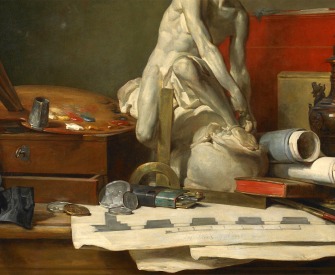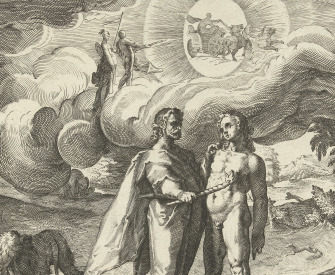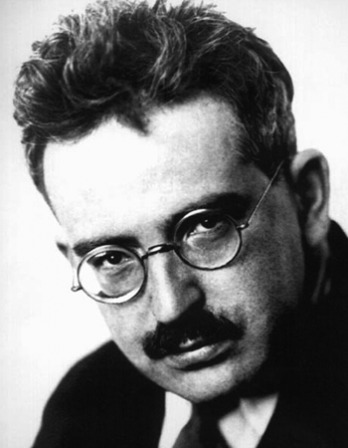Every man has a lurking wish to appear considerable in his native place.
—Samuel Johnson, 1771Castles in Air
The American democracy and dream are the building of castles in air. Whither goeth the one so goeth the other, these days up in smoke and the spout.
By Lewis H. Lapham
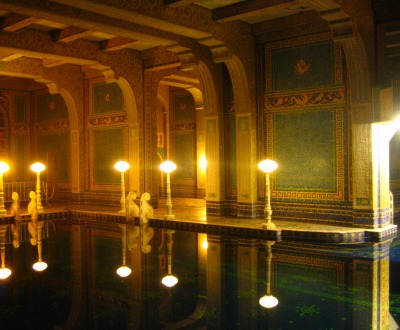
Roman-style interior swimming pool at Hearst Castle in San Simeon, CA.
You can tell the ideals of a nation by its advertisements.
—Norman Douglas
There may not be an “American character,” but there is the emotion of being American…that feeling…of nostalgia for some undetermined future when man will have improved himself beyond recognition and when all will be well.
—V.S. Pritchett
Home in the American scheme of things is a word furnished with as many meanings and locations as money and mother, God and the flag. A place always somewhere in mind if not on a map or lost to a bank, there to be found over a rainbow or bridge, around the next bend in a river or road. Down on the farm or back in the sticks, crossing the bar or the plate. In the burbs with the wife and the kids, out on the range with the deer and the antelope, on a centerfold page in Architectural Digest, at $10,000 a square foot where never is heard a discouraging word and the skies are not cloudy all day.
This issue of Lapham’s Quarterly takes up the topic of home and its whereabouts because also in the American scheme of things the chance at a home of one’s own is the bet on a government of the people, by the people, and for the people. The American democracy and dream are the building of castles in air. Whither goeth the one so goeth the other, these days up in smoke and the spout.
A high percentage of the nation’s net worth and good fortune stems from the buying and selling of home as both fiction and fact, but the emotion of being American emerges from discernible signs of a self-improving future throughout the whole of the society. Not that all present draw the same pay, but that they all share a sense of the commonwealth moving in the direction of when all will be well.
Let the proofs of prosperity appear in only one neck of the woods, the tide coming in for the rich, going out for everybody else, and the notion of home acquires first- and second-class meanings: habitation for human beings and housing for money. The advertising of the nation’s ideal shifts from the little house on the prairie to the brochure selling apartments in Donald Trump’s Fifth Avenue tower of glass—“Elegant. Sophisticated. Strictly beau monde…Your diamond in the sky. It seems a fantasy.”
As did the grotesque spectacle of the mogul’s 2016 presidential campaign. As is the Potemkin village democracy that nowadays fronts the owning and operating of America the beautiful by the combination of financial, real estate, media, and government interests that stand and serve as the nation’s landlord. The teardown of the democratic idea, a slum-clearance project in development for the past thirty years, prepared the ground for Trump’s boasting of his escape from $916 million in taxes while elsewhere in the news it was reported that in no state in the Union can a full-time minimum-wage worker afford to buy or rent a two-bedroom dwelling; that the home-ownership rate has dropped to its lowest level in the past fifty years; that the typical American household holds a net worth 14 percent lower than it did in 1984; that 62,000 homeless people roam the streets of New York City, their number larger than at any time since the 1930s Great Depression.
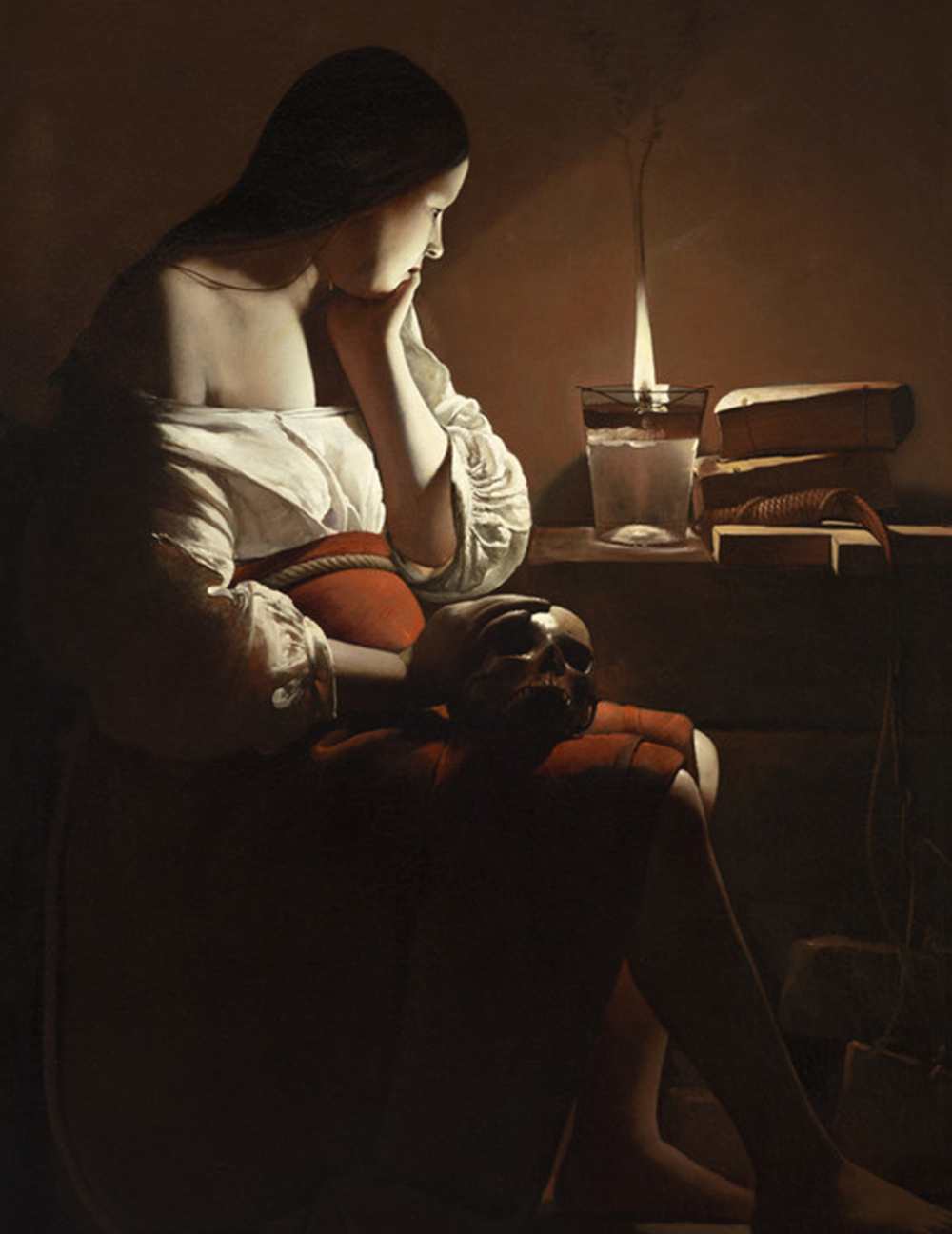
The Magdalene with the Smoking Flame, by Georges de La Tour, c. 1638. © The Los Angeles County Museum of Art.
The division of spoils is the work of Adam Smith’s invisible hand, the wealth of nations distributed by the Industrial Revolution that was the making in nineteenth-century America a land of the free and the home of the brave. Smith drafted the plans for a capitalist consumer economy in 1776, the same year the Declaration of Independence declared all men created equal and thus deserving the chance to prove themselves unequal. The two streams of energy as money combined to produce as many versions and visions of home as could be coupled to the engines of progress, hitched to the wagons of fortune, bubbled on the back of a real estate speculation. Unlike Magna Carta, the Constitution doesn’t contemplate a sharing of the commons inherent in a bountiful wilderness; it was drafted in 1787 by men of property setting up a government hospitable to their acquisition of more property.
The lived-in human space is the labor of architects, bricklayers, carpenters, plumbers, suppliers of household decoration, convenience, and comfort. A great and good gathering of wealth and well-being, but not as rich as the reward for the arrangement and design of the finance, for the construction of the price of a thing as opposed to the worth of a thing.
Home during most of mankind’s sojourn on earth was the worth of the thing on the ground—warmth in the cold, light in the dark, defense against bandits and wolves, shelter from the wind and the rain. Whether as castle or tenement, mud or thatched hut, the value of the structure was its use, not the profit gained from its sale on a market. The space was apt to be crowded, the style of living communal. In a medieval town house in fourteenth-century France, Witold Rybczynski finds things the way they probably were for centuries east and west of the Rhine, north and south of the Danube—a few large and largely empty rooms in which as many as twenty-five people (family, friends, apprentices, children, relatives, wayfaring pilgrims, and strangers) ate, slept, cooked, worked, prayed, drank, dreamed, and died. The people sat on benches and chests, loitered in corners, squatted or sprawled on the floor. The few pieces of furniture were multitasking—tables on which people repaired shoes and ate, beds in which multiple couples with children made room for the night. A house was a necessity, not a display case of prized personal possessions.
The decor was more elaborate in the seventeenth-century galleries of glass at Louis XIV’s Versailles but the domestic arrangements not that much different than those three hundred years earlier in a medieval town house. The spaces were crowded with courtiers and servants, women, children, and dogs all living within sight and smell of each other. Nothing was private and nobody alone, but it wasn’t a community of the free and the brave. Although handsomely costumed and groomed, the aristocratic messieurs and mesdames led lives not in their own custody, any turns for the better or worse signaled by the twittering of a sovereign eyelid or spleen.
Alexis de Tocqueville, the French aristocrat traveling in America in 1831 and 1832, finds the natives at all times “vaguely conscious of the possibility of a sudden and unexpected change in their condition,” but the “instability…in the air” is not the same as it is in the presence of a French king. With the Americans the change was likely to be of their own doing. Property leases in France reached across centuries, but in America both landlord and tenant preferred to sign short-term contracts because who knew when and where better opportunities might turn up, new lines of business in a new line of country, greener grass over the mountains to the west, greener greenhorns drifting in from the east. Democracy in America Tocqueville recognized as an idea in motion, the American experience the serial metamorphoses noted a hundred years later by Daniel Boorstin, historian and Librarian of Congress—“No prudent man dared be too certain of exactly who he was or what he was about; everyone had to be prepared to become someone else. To be ready for such perilous transmigrations was to become an American.” In an age of democracy, said Tocqueville, “all things are unstable, but the most unstable of all is the human heart,” the Americans given to chasing rainbows both real and imagined, people who “clutch everything but hold nothing fast, and so lose grip as they hurry after some new delight.”
Horace Greeley in the 1840s urged the pioneers westward into a landscape he’d never seen but billed as a Garden of Eden. The mule trains departing Independence, Missouri, ventured into what proved to be a desert, the two-thousand-mile length of the Oregon Trail signposted with freshly dug graves. The 1862 Homestead Act granted free title to 160 acres in the Great Plains to settlers who established residence and improved the land for five years. Few settlers closed with the offer because west of the ninety-eighth meridian rainfall was too scarce to water the soil, and most of the available land fell to the lot of swindling real estate speculators. George F. Babbitt, hero real estate broker in the 1922 Sinclair Lewis novel, knows “the market price, inch by inch,” of certain wealthy districts in Zenith, but about the ground under his feet he knows nothing “that it was worthwhile to know”—whether the drinking water is polluted, the mayor corrupt, the summer months heavy with flies. The facts don’t matter; Babbitt isn’t selling a house, he’s selling an accommodation for money, and to his fellow hucksters at a Boosters’ Club lunch he promotes the “realtor’s function” as that of “a seer of the future development of the community and as a prophetic engineer clearing the pathway for inevitable changes.”
So too President Franklin D. Roosevelt in 1932, the prophetic engineer selling the New Deal as the ticket of admission to the undetermined future when all will be well. In 1934 he established the Federal Housing Administration to make home ownership available to his fellow Americans previously unable to afford the blessing and privilege. Ten years later, in his 1944 State of the Union address, FDR framed the terms of the New Deal as a second Bill of Rights, among them “the right of every family to a decent home.” By “decent” Roosevelt meant a detached, single-family dwelling further equipped with “the right to a good education” and “the right to adequate protection from the economic fears of old age, sickness, accident, and unemployment.”
The president was fond of the nostalgic cowboy song “Home on the Range,” and it’s likely he could call to mind Mark Twain’s loving memory of the mid-nineteenth-century Missouri frontier, “earthly smells,” “the sheen of rain-washed foliage,” “the far-off hammering of woodpeckers.” But FDR wasn’t selling waterfront views of the Mississippi River. He was instilling the hope of a stable society free from the threat of revolution, seeking to post discernible signs of prosperity in more than one neck of the woods. A man with a home of his own is a rolling stone gathering moss—aka “civic virtue,” “family values,” “moral fabric”—regaining faith in the American dream of democracy, shouldering the burden of debt that drives the wheels of fortune, steadies the hand on the ox and the plow, keeps the feet on the ground.
With the same uplifting thought in mind and in progress, nearly every president since Roosevelt has made it easier for the folks to front the mortgage on a home of their own. Harry Truman supported the G.I. Bill of Rights, Lyndon Johnson sanctioned the Fair Housing Act, and the deal was a good one for as long as the new homeowners could carry the debt. Their doing so required an economy willing and able to provide a rising standard of living for all hands on deck. Not an equal division of the spoils, but one that at least offered the working and middle classes incomes that shared in the emotion and commonwealth of being American.
The democratic purpose had not been accomplished by Adam Smith’s invisible hand during the course of the nineteenth century, during which the energies of the Industrial Revolution took full and proud possession of the American continent. The upwardly mobile means of production (railroads, steel mills, electric light, meatpacking plants, oil derricks and pipelines) bettered the lot of their owners but not that of their servants. The Gilded Age captains of industry and finance didn’t display the improvement of their position with the proofs of civic virtue. They preferred the conspicuous consumption of bourgeois privilege and luxury—not your run-of-the-mill, up-shit’s-creek moss but the finest and best-quality moss, artisanal moss, moss handpicked by the Duke of Marlborough in his garden at Blenheim, threaded with silk by a dressmaker in Paris.
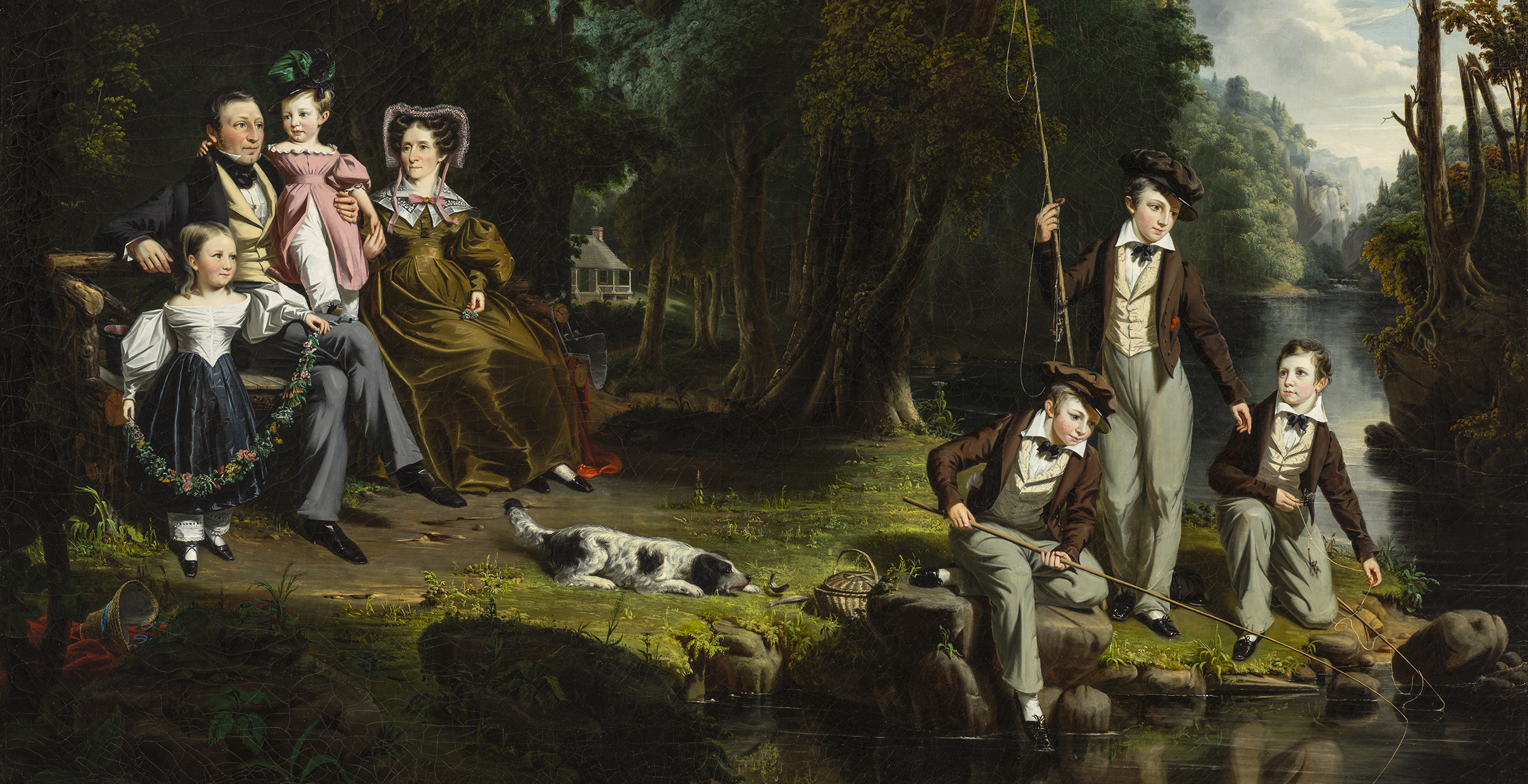
Alexander Masterton and His Wife and Children, by William Hamilton, 1834. © The Los Angeles County Museum of Art.
Two generations of the robber-baron big rich fortified their claims to gentility with home furnishings in velvet plush, gold plate, intricately carved mahogany. At Newport, Rhode Island, the Vanderbilts decorated Bellevue Avenue with the expensive imitation of an eighteenth-century French château; on the coast of sunny California, media mogul William Randolph Hearst brought forth the architectural fantasy of the San Simeon estate seen by Umberto Eco in 1975 as a fortress of solitude, “a combination of palace and museum such as had not been seen since the days of the Medicis,” a vast and mindless storage of Italian ceilings and Gothic crypts, Gobelin tapestries and Greco-Roman temples, much of the stuff genuine, much of it fake, “an incontinent collectionism” testifying to “its own pathetic sadness and barbarian grandeur and sensual perversity…like making love in a confessional with a prostitute dressed in a prelate’s liturgical robes reciting Baudelaire while ten electronic organs reproduce The Well-Tempered Clavier played by Scriabin.”
FDR envisioned a mid-twentieth-century generation of democratically endowed residents of homes on the range or the ground. The customers opted instead for the castles in air and the incontinent collectionism of citizen Hearst, and for nearly forty years they could nearly afford his thirst for prestige. The lifting of the sorrows of the Great Depression promised by FDR’s New Deal was a task accomplished by the stupendous means of stupendous mass production called into being to wage the Second World War. The wonder-working machinery that in the years 1941–1945 armed and supplied America’s victories by land and by sea was fitted at war’s end to the manufacture, distribution, and sale of consumer goods (sturdy and disposable, essential and superfluous) on a Herculean scale of Hearstian extravagance and Elvis Presleyan splendor.
Fortunately for all present, the effort required factory jobs at high union wages, introduced women into the workforce, offered college educations, attracted generous infusions of government and bank credit. Suburban housing developments decorated the whole of the national landscape, new cars and new roads to drive down, new clothes, new kitchens and television sets, more guns, more butter, new sofas and chairs. All the comforts and convenience of an American dream house there to be grasped from a drugstore counter or supermarket shelf, new and newer delights to be hurried after in the shoe departments at Macy’s and Bergdorf’s. Best and most wonderful of all, the chance to improve oneself beyond recognition, become someone else, furnish the new premises and person with discernible signs of moving on and up into an unclouded sky where never is heard a discouraging word, and all men are not equal.
Discouraging words don’t move the merchandise, and none were to be heard from the prophetic engineers booming the markets in boundless desire (for cosmetic and automotive products, financial and dental procedures) servicing the great truth that the castle in air is the name or the face on the label, not the stuff in the bottle.
Foreign or leftist observers like to caricature the United States as a Gilded Age plutocrat, an obese gentleman in waistcoat and top hat devouring the fruits of honest labor as if they were truffles in the mouth of a pig. The emphasis on earthly appetite misses the point of the exercise. More often than not the feats of conspicuous consumption serve as plea bargains with the longing for the ineffable, the material acquisitions as tickets of admission to states of immaterial grace. The taste of the truffle matters less than the price of the truffle, which is the proof of one’s place in the company of the elect, the assurance that the face in the mirror is safely aboard the sweet chariot coming for to carry it home. “Money,” said the German philosopher Arthur Schopenhauer, “is human happiness in abstracto; consequently he who is no longer capable of happiness in concreto sets his whole heart on money.”
Have nothing in your houses that you do not know to be useful or believe to be beautiful.
—William Morris, 1882By the mid-1980s in the American scheme of things home where the heart is was losing ground to home where the money is. The share of the nation’s income drawn from dividends, interest, and rents surpassed the share earned in wages; the deindustrialization of America (jobs sent to China or outsourced to a microchip) was widening the spread between haves and have-nots, dividing the country into a nation of the rich and a nation of the poor. The separation of realms was readily apparent in the high-end advertising for real estate properties in exclusive urban and suburban settings—a strictly beau monde floor in Trump Tower, Gardens of Eden in the Carolinas and Connecticut, secure behind topiary hedges and electronically barbed fences, surrounded, if not by moats and battlements, by a golf course and a privately owned regiment of police. Architectural Digest in 1982 identified its subscribers as residents of the exemplary utopian settlement “Affluence, America,” illustrated in the magazine with a drawing in the Art Deco manner of the 1920s, a Jay Gatsby and Daisy Buchanan dressed by Ralph Lauren, posed against a backdrop of horses and lawns, ennobled by their incorporation within the magazine’s demographic—eight of ten buy fine arts and antiques, five of ten own two or more cars, three of four go abroad every three years, two of five buy wine by the case.
Although the separation of realms was a done deal by the time Bill Clinton appeared in the White House, it was still very much in the national interest to pretend that the borders weren’t sealed, that the American democracy hadn’t been made homeless. To maintain the fiction of a government of the people, by the people, for the people, and to step up the high-hearted spending that was the strength of America’s capitalist consumer society, Clinton in 1995 offered a new National Homeownership Strategy “to harbor, to nourish, to expand the American dream” by enlisting the “creativity of lenders…real estate professionals…housing finance agencies” encouraged to nourish and expand their taking the easy money with which the government was feeding the banks. President George W. Bush in 2003 signed the American Dream Downpayment Act facilitating the blowing up of the home-mortgage bubble with subprime extensions of credit, among them the “Ninja” loan (offered to borrowers with no income, no job, no assets) and the “Liar” loan (requiring no documentation of the borrower’s net worth or annual income). The bursting of the bubble in 2007 and 2008 subtracted $2 trillion from the nation’s pension and retirement accounts, prompted the evictions of many millions of bankrupted and unemployed householders, forced the broad American economy into the Great Recession from which it has yet to recover.
In the late 1810s, when Honoré de Balzac was a poor and unpublished writer in Paris, he lived in a garret under a roof of broken tiles near the cemetery of Père Lachaise. Down in the mud and behind on the rent, he was given to inscribing on the bare, ruined walls the signs of proper bourgeois luxury—notes on the location of expensively imagined furniture, titles of famously decorative paintings. Moving up to makeshift lodgings in the 1830s, Balzac again dressed walls in the comfort of words—“rosewood paneling with commode,” “Gobelin tapestry with Venetian mirror,” and, in the place of honor over the empty fireplace, “Picture by Raphael.”
By 1847, having become both famous and rich, Balzac filled out his house on the rue Fortunée with costly proofs of his once impoverished hypothesis— Sèvres porcelain, gilded bronze, an oak toilet seat with green velvet and gold studs, a chamber pot “having belonged to Madame de Pompadour.”
Balzac’s upwardly mobile progression from virtual to actual reality was the story of America’s nineteenth-century industrial captains and kings—young man of promise storms the walls of the capital city, climbs the ladder of ambition, gives weight and form to the images of his desire, makes his way across the dance floor of the best society, achieves the stature of a commodity. Which is the way things worked out for Citizen Hearst, John D. Rockefeller, and Commodore Vanderbilt, and again in the twentieth century for the Wall Street hedge-fund operators and prophetic Silicon Valley engineers, among them Steve Jobs and Bill Gates, who turned up in America’s second Gilded Age with the keys to the kingdom of Architectural Digest’s “Affluence, America.”
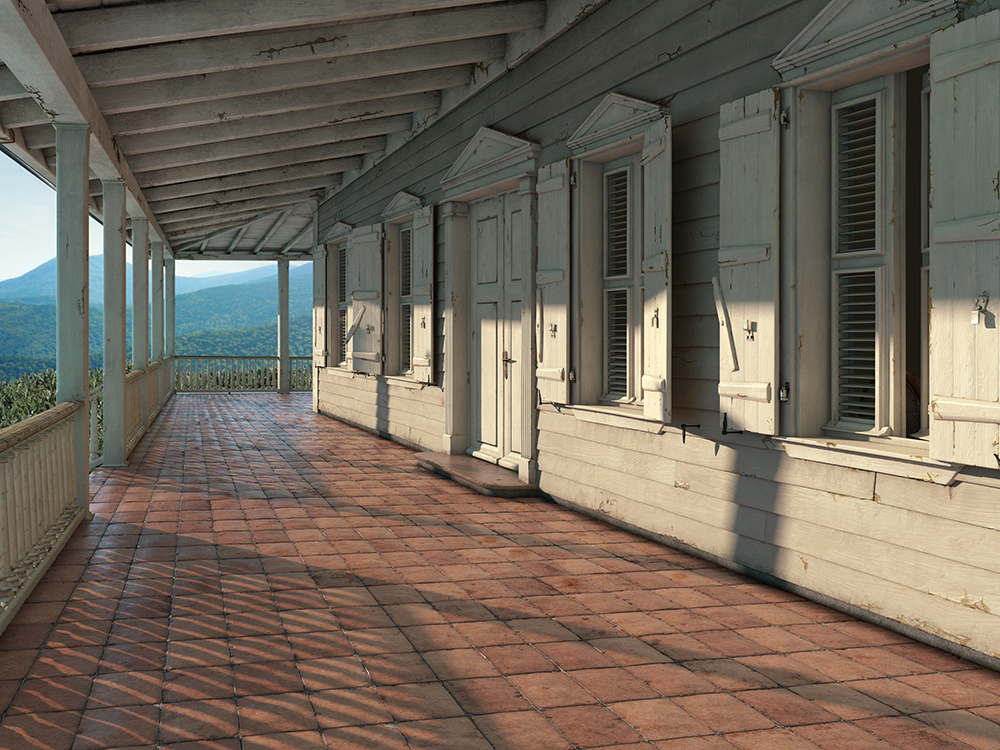
Jealousy, by Orit Raff, 2013. © Orit Raff, courtesy of Julie Saul Gallery, New York.
Things haven’t worked out as well for the democratically endowed dreamers of the American dream floating on the rising tide of prosperity in the boom years subsequent to the Second World War. By the late 1970s, the boom was losing momentum, and so was the affordable credit. Which is to say, as did Henrik Ibsen in 1879, “Home life ceases to be free and beautiful as soon as it is founded on borrowing and debt.” Ceases to be free and beautiful for the occupant of the lived-in human space, not for the absentee owners of the price of the thing (corporation, insurance company, bank) who retain title to the property free and clear of its human flotsam and jetsam.
Balzac’s story reverses itself, the turn around the bend in the river or rainbow leading back from actual to virtual reality. Which is the tale being told these days everywhere in the news, social, and entertainment media—young man of ambition moves in with his parents, middle-aged pillar of the community falls through the trapdoor of an unforeseen downsizing or merger, descends the stair of humiliation, withdraws into increasingly small spaces for human habitation—a two-hundred-square-foot box of an apartment in Manhattan; a refurbished Bluebird school bus, forty feet long, in Marin County, California; a matched set of cargo containers on a vacant lot in Brooklyn—and there rests content in his or her fortress of solitude with a mash-up of cable-channel images as abundantly insane as the antique bric-a-brac enveloping Hearst—This Old House, Property Brothers, Keeping Up with the Kardashians, Martha Stewart’s Cooking School, Real Housewives of Beverly Hills, Ultimate Yule Log. Home, home on the home screen, where Facebook and Instagram play, and on laptop and iPhone the bluebirds of happiness tweet, chirp, and peep all night and all day.
